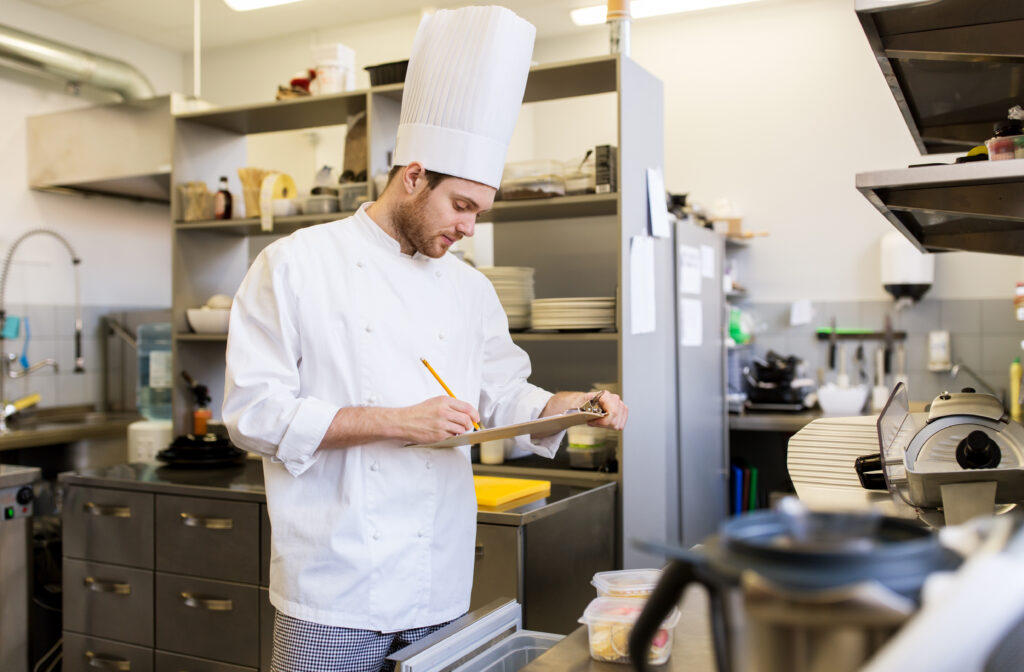Effective cash flow management is at the core of every restaurant business. In 2024, the hospitality sector faces significant stress due to food price volatility, changing consumer preferences, and other economic uncertainties. Effective cash flow management can help your restaurant overcome these challenges and ensure profitability. In this article, we’ll look at the ten best tips for managing your restaurant’s cash flow to help your business succeed.
The 8 best restaurant cash flow management tips
By implementing strategic practices, restaurant owners can navigate the challenges posed by the current economic climate. Here are eight tips to help manage your restaurant’s cash flow effectively.
1. Keep monitoring your cash flow
Managing your cash flow on a regular basis is one of the first steps you should take to ensuring your hospitality business’s success and profitability. Get into the habit of reviewing your cash flow statement on a weekly or fortnightly basis, and run monthly reports to make sure your profit margins are where they’re supposed to be.
2. Control food costs
Implement strategic cost-saving plans for food purchases without compromising on quality. You can do this in a few different ways. First, train staff to provide the correct portion size to avoid overservicing customers, ensuring consistency and cost control. This is one of the most basic and easy ways you can save costs on your restaurants while maintaining your reputation.
You can also try regularly reviewing and negotiating prices with your suppliers to ensure you’re securing the best deals.
3. Optimise your menu
Like your budget and cash flow, you should regularly review your menu. Are you capitalising on seasonal produce? Or are you paying top dollar for out-of-season items? Are there any low-performing dishes that you can afford to cut?
Another way you can make the most out of your menu is by training staff to up-sell high-margin products and also cross-sell certain menu items that pair well with other dishes.
4. Offer discounts and customer loyalty programs
Promotions and loyalty programs could attract more customers and in the process increase sales and cash flows. However, they should be well thought out and implemented for profitability.
A few different discount or loyalty ideas you could implement include:
- Limited offers: Limited-time offers promote sales by creating urgency to boost sales.
- Loyalty programs: Set up a loyalty program to increase repeat business. This could be as simple as a punch card or coupon tickets for past customers, or you could even consider designing your own app.
- Bundle deals: Bundle deals can help to increase the average transaction value.

5. Implement a restaurant point of sale (POS) system
A modern restaurant POS system is much more than just a tool to complete transactions. It can also serve as your cash flow management partner. With the most modern POS systems, restaurants will be able to monitor in real-time what is selling, when inventory is running low, and even be able to project future sales patterns. In this way, your POS system can also be used to manage your inventory effectively. This can help give you better oversight on your resources, preventing you from over-ordering.
Depending on the type of POS system you invest in, it may feature the following advantages that can help you monitor your cash flow:
- Real-time sales tracker: Real-time monitoring of your daily sales gives you a comparison with the past days for any patterns or recurring trends.
- Inventory control: If stock gets automatically updated, then there is no risk of overestimation or underestimation of stock.
- Financial reporting: Detailed financial reporting provides insight into your restaurant’s performance and helps in decision-making.
6. Control the overhead costs
Badly managed overhead costs (such as rent, utilities, or insurance) can put a huge drain on your cash flow. The simplest way to take better control over your overhead costs is to periodically review them and find creative ways to cut costs without affecting your levels of service or quality.
One way you could reduce costs is to look at ways you can save on your electricity bill. Maybe you could introduce energy-efficient appliances and lighting that will help keep utility bills down.
Another way you could try and cut down on overheads is be negotiating your rent. If possible, you may be able to negotiate a better deal for the property.
7. Manage payables and receivables
By effectively managing your payables and receivables, you’re building good relationships and maintaining a health cash flow at all times.
If you have a good relationship with your suppliers, then you may be able to ask for an early payment discount or for flexible payment terms.
And when it comes to receivables, make sure you always send out invoices promptly and that you follow up on late accounts.
8. Create an emergency fund
No matter how well you plan, something along the line might surprise you. Keeping cash in an emergency fund can help you in a time of need when things don’t go according to plan. This will allow you to continue operating even when an unplanned event threatens to disrupt your business.
Putting it all together
If implemented, effective cash flow management can keep your restaurant running and ensure its survival. Every strategy, from inventory management to monitoring food and labour costs, will play an important role in keeping cash flow healthy. With careful planning and careful management, you should be able to navigate the challenges of 2024 and achieve long-term success.
“The opinions expressed by BizWitty Contributors are their own, not those of BizCover and should not be relied upon in place of appropriate professional advice. Please read our full disclaimer."







